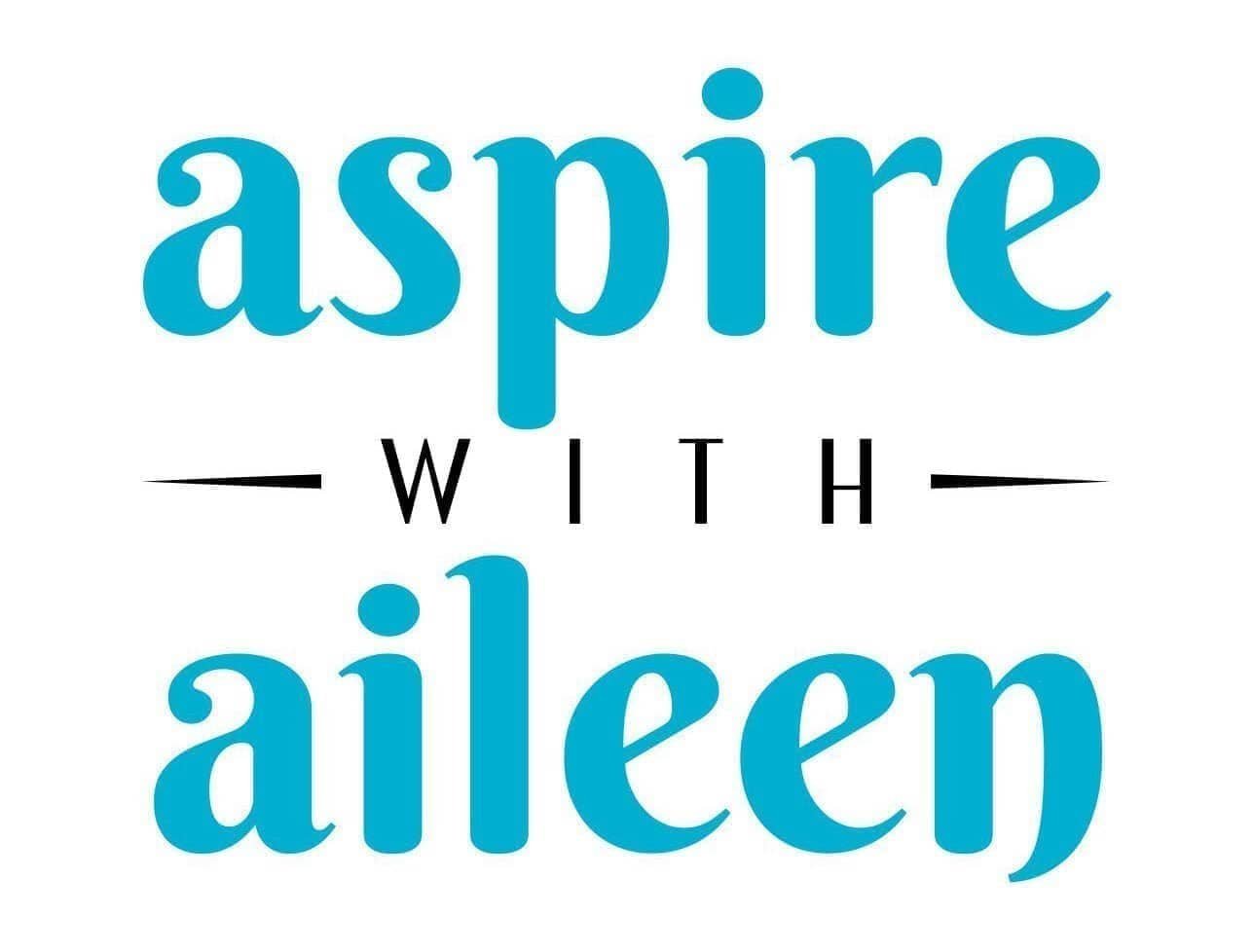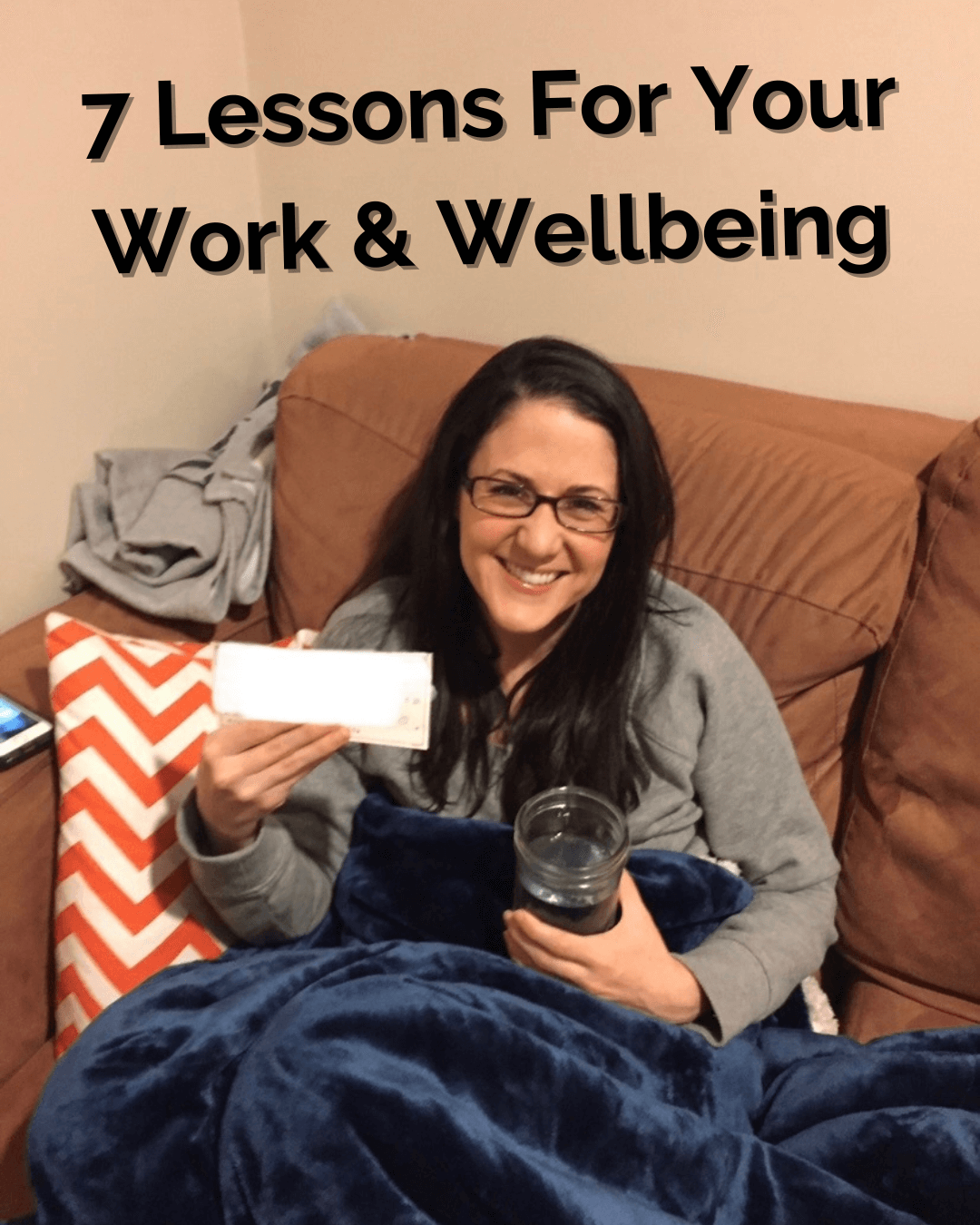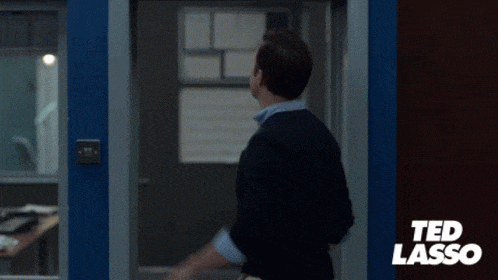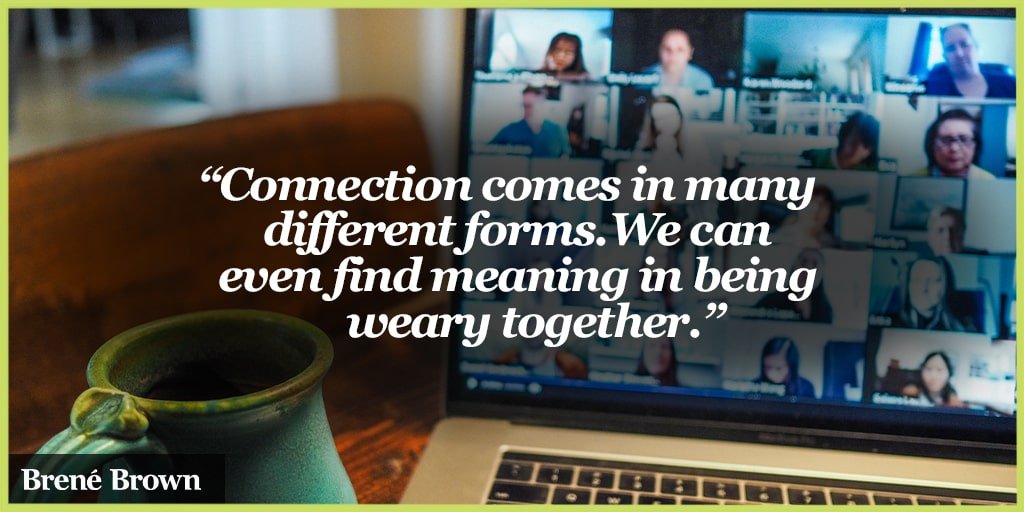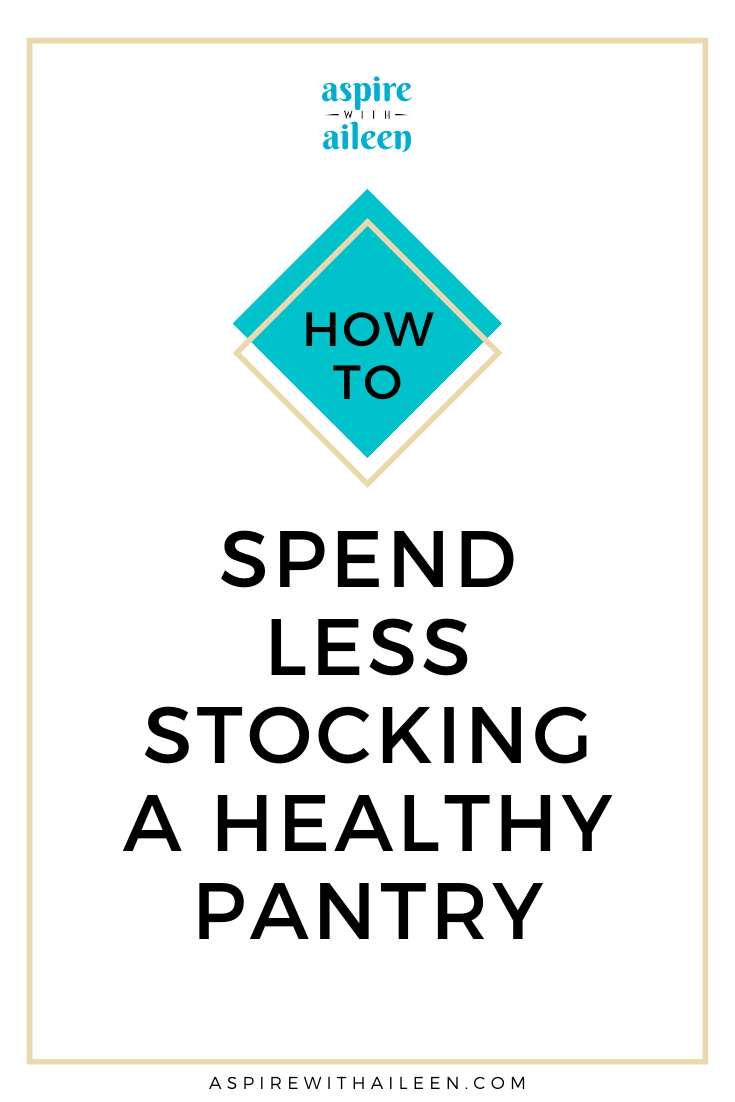Understanding the stages of burnout is crucial in order to take proactive steps toward prevention and recovery. Join us on this enlightening journey as we dive into the 12 stages of burnout and empower ourselves to prioritize self-care and wellness.
Auto-generated transcript below. Please excuse any typos!
Which stage are you in and how do you ensure you get out of the cycle, the cycle of burnout? Yes, there are 12 stages it's not just that flat-out passed out in the hospital bed or the subway that is burnout there are 11 stages beforehand.
On this episode will be decoding all of the 12 stages for you giving you the science to avoid the later stages and tips on what to do next.
Stages 1 and 2: Excessive Ambition and Working Harder
Starting with the incomparable and amazing Audrey, thank you Vanessa, and thank you for hosting us as always, Vanessa is incredible at this. So we're going to cover, I'm going to cover stages one and two, my name is Audrey Holst I am the founder of Fortitude and Flow and the perfectionist archetypes which is something I'm going to reference in this first stage which is excessive ambition or the compulsion or need to prove yourself I tend to put this under the hero perfectionist archetype so you may find this in people that are willing to work harder than everybody else they don't complain they make it look easy they tend to take on things that are more than what is realistically reasonable and they don't even think about saying no, they just add stuff to their plate and, I know a lot of folks especially those who are really in caring and ambitious perfect professions just like the laws the lawyers that I work with are in this category.
So we start here and what happens is these folks tend to keep pushing themselves and essentially it ends up just amplifying. So, pushing themselves to work harder this becomes the inability to just turn it off right, work mode becomes the default mode so it can be difficult to prioritize in this place everything. Everything feels urgent it's like everything takes on this umbrella of feeling of urgency. Focus in general goes straight to work head down gets it done and there's a little space for other pursuits so this becomes a situation where people have more on their plate than what their plate actually allows for. Just from that description, we're only in stages one and two you can imagine that this is not a sustainable way to work in the long term.
Stages 3 and 4: Neglecting Personal Needs and Displacing Problems
Aileen take it away with the next stages - thank you so much, Audrey, hello my name is Aileen Axtmayer the founder of Aspire with Aileen, I'm a career coach and a corporate Wellness speaker helping people reduce stress and hopefully recover from burnout or prevent burnout in the first place, so I'm going to be talking about stages three and four which are neglecting personal care and needs as well as displacement of conflict. The displacement of personal or neglecting personal care and needs is sounds pretty self-explanatory but it's an important one to highlight because I think this is where we often will see more of the external signs and symptoms in our colleagues and our employees and potentially ourselves so when we take that prioritization of work like Audrey spoke about and it's that heads-down focus one of those common starting points is oh let me just stay up a little later or let me just grab that take out and then when we start to move towards more of that burnout mode, this becomes a significant and decrease in quality and quantity of sleep maybe not feeding ourselves nutrient-dense food, not moving our bodies so all these basic needs that in isolation we might say oh I didn't really work out that time but when we zoom out we can see a lot of them start to take a toll.
When I work with my clients in this, I kind of draw a Venn diagram, it's like unaddressed work stress then you have less energy right when you're not managing stress and it's more of the distress and chronic physiological stress versus good stress or eustress when that's not addressed we start to have less energy to give and we have less energy, of course, we don't want to cook, no one goes for kale when they're feeling stressed out and then we get more of you know the comfort foods. That lends to the couch being extra comfortable, and then when we are sucked into that couch we don't want to move our bodies we also impact our sleep with those food and movement choices and then the whole thing perpetuates itself. We'll go to Kate to learn what happens when that cycle begins and or continues and what happens next.
Stages 5 and 6: Revision of Values and the Growth in Shame
Hi, everybody, I'm Cait Donovan, and I work with organizations to do to reduce systemic burnout so they can keep top talent. I do this through keynotes and workshops.
Number five in the 12 stages of burnout is changing in values and we sort of alluded to this Audrey, alluded to this earlier when she was talking about this inability to turn off. Work is the priority, and work is always the priority nothing else is a priority even if those are not your internal values. This is really tricky so you have to start thinking that those are your values until you stop and really look at it. So by the time you come around to facing burnout, it feels as if it just happened without your permission as if you were not in the driver's seat this whole time and sometimes you're not for a moment. Right?
The red flags to look for here within your organization are inordinate amounts of late or early emails, people emailing all the time at 2 A.M and 10 p.m. This persona where the only thing this person can talk about is work. So they stop talking about their hobbies, they stop talking about their families there's nothing else going on in there. Also a frustration with other people who are not prioritizing work in the same way that they are, so this can create some toxicity between your teammates and between people. This is important to look out for that continues and we move on to stage six. Stage six is the denial of problems and the growth of shame. This is where my good friend, Negative Nancy comes in. I want to apologize to any super nice Nancies that might be out there this one in particular is negative in this stage there is cynicism, sarcasm, explosive reactions, and a sense of disconnect.
This is one of the stages that relates directly to the World Health Organization's definition of burnout. The red flags that I want you to look for here are interpersonal problems, toxic communication patterns, and overall changes in behavior to a more negative focus than was typical for this particular person.Moving on to cycle numbers seven and eight. I would love to leave you with Vanessa Zamy.
Stages 7 and 8: Social Withdrawal and Behavior Changes
Thank you, Cait, so hi there, I'm Vanessa Zamy known as the Business Defibrillator, I help business owners grow their businesses without burnout and I'm going to be connecting with you about stage seven and stage eight of burnout. So perhaps you're you know you're not taking care of your basic needs, your values are misaligned, you're attributing to that Negative Nancy that we just heard about and you're saying to yourself all right there's more, yes, there's more. So, number seven is the social withdrawal that sounds very obvious right, what is social withdrawal? When you withdraw from society, now the thing about it is, that there are subtle differences to this, right, because let's talk about introversion versus extroversion, you may say oh but that person's just an introvert they just prefer to be inward and like I'm just an introvert so that's why I'm not connecting with society. When it comes to burnout, how do you tell the difference? This is where you may either hear yourself or your colleague saying well you know I'm not able to go to that event because I have to work on that project or I can't make it I have this family thing very vague or I can't make it my dog needs help just all vague things but that's not necessarily the issue. The issue happens when you're repeatedly hearing these responses every weekend, every Saturday, every Sunday, every Friday, every Wednesday. It's you, they used to say yes, but now they just always seem to be something in the way.
As a business owner entrepreneur, an example of this would be when you're telling yourself or you're telling your friends oh I have this thing I gotta do for business every single weekend. Every group gathering you have something else you have to do right because here's the thing even introverts interact with people and so if you find yourself without any societal interactions then you are on stage seven.
Now stage eight is the obvious behavior changes. Now what this means is that you just act differently, I mean you literally just act differently not even just in society like a social going to events not going to events but other behavioral changes that were alluded to a little bit earlier as well when Aileen mentioned neglecting personal care and needs. That's one type of behavioral change, right? An example is one of my clients where, you know when we had to take a step back to say okay what is it that makes you feel good about yourself she noted that oh I used to swim when's the last time you swim I asked her oh about a year ago, you see how that, you know, works out there?
And then today I was actually connected with somebody who has a non-profit right, non-profits are amazing she's had a non-profit for 11 years when I was speaking with her this is a potential client we'll see she becomes a client but essentially when I was connecting with her right I can tell the passion was gone. I can tell that she was no longer feeling passionate about the non-profit and she wasn't able to tell that for herself. And you may be in the stages where you're listening to us here today and you're saying to yourself oh I have been a little bit, oh yeah, yeah there's that thing I haven't been doing in a while hmm right? And so sometimes thinking about what is that passion that you need to reignite within yourself so that you can ensure that you're moving forward with the things that you need to with your values as Kate had mentioned or even with you know personal care or needs that you need to have to happen so that you continue back to the behavior change that actually suits you, not the behavior change that is actually harming you.
Stages 9 and 10: Depersonalization and Emptiness
Moving on to the 12 stages of burnout, next up we have Dr. Sandra. Hi everybody, I'm Dr. Sandra, a clinical psychologist, and personal energy strategist connecting you with those resources you need to make this journey from burnout to sustainable leadership and success whether that is an individual or a group, or an organization. So I'm going to pick up where Vanessa left off and talk a little bit more about what happens when you're now not doing what you need to do for yourself, no longer taking part in things that matter to you so much so that you get to the point that's called depersonalization. When you get to depersonalization I can tell you right now you're pretty deep into burnout, you're way down, you're sliding down that slippery slope. In depersonalization, you're not noticing your body anymore, you're failing to pay attention to your body signals at all. This is the person who goes to get a pair of pants from the closet and thinks they can still wear them but then they put them on and it's like, oh so like I really can't fasten these pants anymore. So they've spent months now eating too much not attending to themselves and now they're and they haven't even noticed that their body's gaining weight. Sometimes they also start to do things because they're sort of beginning to stay move towards numbing, they do things that actually will harm their bodies more than help their body. So this might be a little bit extra drinking, a little bit taking part in things that actually make the situation worse, and eventually end up in stage 10 which is called emptiness. This emptiness is actually a stage where it feels frightening because you now don't feel like you're quite alive anymore. You feel very drained and depleted and it's so scary that sometimes people will actually do things to try to make themselves feel alive. So sometimes that's a lot more sweet food, a lot more sex, a lot more drinking. So when you get to these stages, you can see that you're at the point where you actually really need some professional support. In the depersonalization stage, you're probably seeing some physical symptoms like you might have rashes, you might have pains that aren't going away. And by the time you get to this emptiness, you probably do have some significant physical symptoms. You're going to need a physician and you're going to need somebody who's a burnout expert to help you move through this.
Stages 11 and 12: Depression and Total Burnout Syndrome
And then we're going to switch over now and Dr. Sharon is going to tell you about these last two stages of the system that Freudenberger and North created. Thank you so much. Yes, I am Dr. Sharon Grossman, I am the Burnout Doc and I, as a keynote speaker and coach, work with really, really fried exhausted executives and their companies who want to stop freaking out or checking out and I help them rock out. So what we're going to talk about right now are these last two stages because you want to know how far this can go. Stage 11 is where you get to a point where you're just feeling depressed, and I get this question a lot sometimes people are wondering about the difference between depression and burnout so this is a really important stage for us to understand and to be able to pull apart.
Now I am a trained psychologist and so I've worked with people who have suffered from depression for many years and so if you just look at depression outside of burnout what we see is there's a change in appetite, there's a change in sleep that we tend to isolate ourselves more, we experience more of a sense of worthlessness, more inappropriate guilt over things. You might just have that feeling like you're walking through molasses, everything just takes so much more energy and it's really hard to motivate and get moving. And while that is depression in and of itself, it is actually in the later stages of burnout something that we can see.
So we see sometimes that you have both things happening at the same time. What does this mean for you if you are depressed but you're also having certain symptoms of burnout? Then you might be at this stage 11. The way that we can tell if they're both happening or if it's just depression or just burnout is that with burnout when we step away from the situation, it's easier for us to bounce back. But with depression, that doesn't happen. You can be completely removed from the situation and still feel depressed. So this is a big differentiator.
Stage 12, this is our final stage. This is what is referred to as total burnout. So this is the end of the spectrum and unfortunately, it is very, very serious. So we need to think about it as such. This is where you no longer care about yourself or others. So in the same way that depression is a stage where you get to a point of hopelessness and oftentimes people who are severely depressed will say, "What's the point?" This is what we see often in that stage 12 of burnout. This is where you've just reached mental and physical collapse. You view your life as meaningless, and it really does require medical attention because oftentimes what we see is people become suicidal, they're at risk for suicide. So this is where if you are thinking about hurting yourself or someone else, then we really do encourage you to call 9-1-1, go to your nearest emergency room, and make sure that you get the help that you need so that you don't do something that is going to hurt yourself.
Um, and you know, I don't want to just leave us on this note because this is a very kind of depressing, speaking of depression, place to end. But really, the reason that we're here today to talk about all these stages is to alert you to how really significant and severe this can be. And now I think we're gonna also share with you what you can do if you are experiencing burnout. So I'm going to hand it back to our host Vanessa. So thank you, Sharon, for that, and thank you to our panelists here.
Questions for the Panel
A few questions have come up, right? So we had, we started out with, as you can, and hopefully everyone listening, right, you can see that yes, there are 12 stages, right? There are different pieces and components where burnout is not just you flat out. It's things little things here and there that happen to your psyche, to your physical way of being, to how you relate to yourself internally and externally, that really add up to eventually getting to that point where you are asking yourself, "What is the point?" And if you know someone who seems like they might be approaching that or if you yourself are approaching that, I hope you can see that there's a way out of it, right? There's not, you don't have to continue on the path towards all the 12 stages, and even if you end up at the 12th stage, you can still find your way out.
A question that I have here is, so Audrey, I mentioned something about, you know, excessive ambition and compulsion, and you know, people said they're pushing themselves to work harder and not being able to turn off. What are some tips that you may have or anyone on the panel may have for how people can effectively say no?
Yeah, it's an excellent question, and I think also folks should reference the panel that we did last month because there are some really good tips and tricks. And I mean tips and tricks, to put it lightly, right? This is something that you can't just take one trick and all of a sudden you're like, "Yeah, cured!" You know, like this is something that is an embodiment in the nervous system. I think that maybe as you can listen to each of the stages going deeper, you're realizing that it's not just like a mental thing, it's also a body thing. Once the body starts getting deeper and deeper into this, it becomes harder and harder to pull it out on the other side.
So, creating awareness is the biggest thing here. If you have no idea that you even have the option to say no or that you are pushing past a limit, you have to start recognizing limits, you have to start recognizing needs, you have to start recognizing the fact that, "Oh, what does it mean to be taking on too much?" or "What does it mean to be having compulsive ambition?" These are things that require some awareness before you can actually address them. So, just starting to create some noticing. When I use the framework, the forward student flow framework, it's noticed that is number one because you can't create change until you've actually paid attention. I'm sure other people have plenty of things to say about this topic.
Yes, love it. Anyone else on the panel would like to add on tips on how to, on that person who's facing that perfectionism, in a sense, right? I think that's the perfectionist archetype is what Audrey had alluded to. Right ways that they can, you know, embrace because perfectionism is not necessarily bad. It's not horrible, you know, it's just more so, you know, it can be harmful in this scenario, but it's not terrible, no. If there's a neurosurgeon that's operating on my brain, like please be a perfectionist. So, there are places where perfectionism is highly necessary. The question becomes, is the place where you're applying it right now highly necessary? Is it really that highly necessary?
But for me, before we get to saying no effectively, we have to break down why we avoid saying no in the first place. If, for instance, really commonly with clients, I hear that they're not saying no to people because they don't want to disappoint anyone. If you have a major fear of disappointing people, I can give you all sorts of scripts for how to say no to things, but you're not going to use them. So, I think what we need to do before we start saying no, before we give people the words to say, is to pull apart where is this striving coming from, where is this really happening in your body and in your persona, what's going on here? So that we can unwind it and create space for you to be able to not even then get to having to say no because you're not saying yes in the first place, right?
So, I like this idea of internal boundaries, where we're looking at, especially in my work, we're looking at resentment, seeing where it's built up, and then pulling ourselves out of those situations that aren't even requiring or asking for our help. That's not stating a no boundary, it's just not over participating in things that aren't asking for you. Foreign good point.
Yes, so next question for the crowd here while we wrap up. So, we talked about a few things that we came up with when, you know, Aileen or even when I was mentioning just the idea that you then reach a stage where you're not doing things as you used to do. So, whether that be neglecting personal care overall or maybe not eating well or at all, or neglecting things that you like to do, whether it is swimming or even just things that you're passionate about. So, any advice here from the panel on how does one bring those things back? Right, let's say someone is listening and they're at that place where they have stopped doing stuff and now they're in this kind of new routine that is, you know, it is a routine, right? It's not a helpful routine, but it is a routine. Any tips from anyone here on the panel on how can they bring that back?
Yes, Sharon. Well, I think these two questions actually have something in common. We are thinking about, you know, even in the way that we're asking these questions, we're thinking about our behaviors. How do we do something different from how we're doing it? And I think that we often get into trouble when we're just focused on the behavior because the reason that we've been doing it this old way all along is because there's some underlying belief that we hold. And that may be something completely out of our awareness. It might be a subconscious belief that says you don't deserve to feel good or you aren't a good person or if you don't say yes to other people, they won't like you. So, we have all these reasons for doing things the way that we do them. And so, yes, we can talk about how to change our behaviors. But ultimately, I think if we don't really focus on changing the beliefs that are underlying, these are the things that drive our behaviors. So, we kind of are going against the stream. That would be my first stage, is to just hope you change the way that you think about things, the way that you believe about yourself and other people. That's leading you to do things the way that you're doing them. Once we clean that up, then changing the behavior gets a lot easier because we all know what we really need to do. We're just not doing it. That mindset, that mindset indeed.
Right, and I know we each have our own different fields. Some of us do corporate leadership, others…
I do the business side. Some of us do the early life transition side and all these different pieces. But the common thread is the mindset, right? Getting into the mind and beliefs. Did anyone else have anything they want to add? Oh, yes, Dr. Sandra. So yeah, and I was, um, I had the same thought as Sharon that there's a connection between this difficulty turning yourself off, always being focused on work and self-care. And part of that is sometimes we're in an environment, again with the beliefs, where it is suggested that as a woman, as a person of color, as this or that, you're not really allowed to thrive in this environment. Like you're gonna have to go the extra mile, you have to do more, you have to do twice as much to get half as far. So there's a belief there, and there's also a legacy, and they are also often realities in your environment that do hold you back because the beliefs are not always in you, they're in somebody else's head about you, and that person makes decisions. So you may be fighting something that you don't really have control over. So beginning to help you sift that out and see whether or not you're fighting you and shifting beliefs you can shift or you're fighting some other belief that outside of you is an important distinction as well.
And I think very simply we can all end our day by saying where that I take care of me during this day. Just at the end of your day, where did I take care of me during this day? And if there is no place that you took care of you, then we definitely want to begin to help you do at least one thing every day where you say you can end that day and say, "I took care of me today." I was going to add to that too for organizations, people who are trying to help their employees not burn out. Now, listening for some of the signs and symptoms that we've shared can be really helpful to assess the culture. But really being intentional about the way you're connecting to and learning from your employees about how you're creating opportunities for them to take care of themselves or not, how you're managing expectations of being on all the time and responding to things in a timely manner so that, like Dr. Saunders shared, the other side of the coin for those listening who are trying to create healthier cultures at organizations, what can you do to contribute to a healthier environment that helps get rid of that dialogue that you have to, that the only way to succeed and to be a good team player is to sacrifice yourself?
Yeah, and on that piece of team, I'm curious Vanessa, since teams like it's your specialty, um, what like what would you suggest in terms of that teamwork aspect when it comes to burnout? Because it's a huge piece. Like a lot of this is we're talking about that environment, the individual, but that team piece is like a whole other element. That is such a great point, and it starts with the leader. It starts with the leader of that team because at the end of the day, the team members are following what the leader is doing. They're following what they see or they think can be is approved by the leader, what they see or think the leader is doing. And let's say you are the leader, what you're saying to yourself, you know what? Perhaps I work the weekend, but I don't expect my team to work the weekend. Then you've got to say that because guess what? They're going to do, they don't work the weekend. Oh well, this person, the most weekends. I'm worth the weekend too. And like that way
I can get promoted, right? And being acknowledging that as the leader, you do have the power, you have the influence to guide your team in direction so that they can understand that you know what, one of the values that we have is that you're able to work on your own time or one of the values we have is that you only work nine to five or that if you need to put in extra hours, you put in extra hours. If that's your team culture, do you live your life, but having those boundaries, having those expectations, and making them known and communicating those effectively is what will help your team to align with each other even stronger.
Yes, yes indeed. Great question, Audrey. Um, yes, so we are running a few minutes left, so we're gonna wrap up here and I'll pass it off to Audrey as well to close us out. And for those who have any questions, if you're listening to the replay or watching us during the replay, then I encourage you to react and also, you can also comment with your questions. We will be keeping an eye on the comments as well too the next couple of days, so you're welcome to comment if you have any questions come up or reach out to us individually.
Audrey: Yeah, so this is something else that you can if you're watching the replay, you can click on right away is you've had us, you've heard us talk a little bit about, you know, what is the sort of existing paradigm around burnout, but you can also hear that there have been some updates to this model in a lot of ways and that the work culture has changed and work culture is changing. It's like a living breathing entity. And so everybody in here has been working within this living breathing entity of Team space, individual space, organizational space, working with folks to prevent burnout, to talk about burnout, to educate about burnout, and to help people recover from burnout. So this is a group you can bring us into your organization, we can talk about this, we can educate on this, and you can hear how everybody has their own synergy here, but everybody has individual expertise. So there is a link that's going to be dropped in the chat where you can click on it and you can ask us specifically to come talk to your crew or that you can even ask us questions that you want to have us answer in future panels, discussions like this on LinkedIn or maybe there's somebody that you know whose team might really need us. Well, keep it anonymous, but you know, this is something that you can start to recommend, let people know that this is happening, right? That this is available because this is certainly, as you can see, burnout doesn't just magically go away by itself. It's something that needs some sort of outside intervention or education or awareness in order to create a shift. So you can check out the form, fill it out, and even if you're watching the replay, this is going to be available for you at any point, so save that bookmark, that link. So when you're sitting around starting to remember some of the stuff we talked about today, okay, there is, there are people and there are resources available.
Fantastic. Well, this was the burnout panel on decoding the 12 stages of burnout, and the link is in your comments. Join us in 2023 in the new year as we tackle another topic to get you through and on the other side of burnout. Ciao.
